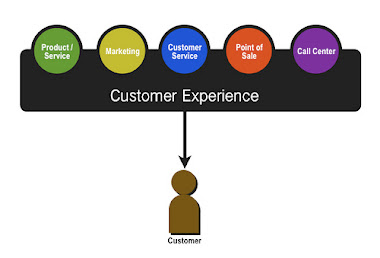As customers gain numerous new channels such as mobile and social, the linear purchase path is fragmenting into a loose collection of numerous touchpoints over which marketers have little control. Forrester advises it's time for marketers to abandon the traditional marketing funnel and instead adopt an approach that revolves around building an ongoing relationship with the customer, that the consulting firm calls the Customer Life Cycle.
In a new report, “Embed the Customer Life Cycle Across Marketing,” Forrester states that only the companies which “obsess” over customers and combine engagement via new digital channels with traditional marketing methods to create complete brand experiences will succeed in the modern customer environment.
Fundamental customer needs must reside at the center of the Life Cycle strategy. Following, is a brief review of Forrester’s detailed rationale for adopting the Customer Life Cycle marketing approach.
Forrester very bluntly proclaims the linear approach of the marketing funnel, which has existed for more than 100 years, is “outdated.” Reasons for the obsolescence of the marketing funnel include frequent consumer exploration of products and services via mobile, social and online channels — which enlarges their consideration of brands at the point where the traditional funnel narrows.
In addition, customer retention is becoming more important than customer acquisition and the funnel does not account for increasingly important personal recommendations.
Customer Life Cycle Meets Modern Needs
Forrester officially defines the Customer Life Cycle as “Customers’ relationship with a brand as they continue to discover new needs, explore their options, make purchases and engage with the product or service experience.”
Forrester cites several reasons why this approach is better suited than the marketing funnel for the modern consumer environment — it puts the customer at the center of marketing, involves the entire brand experience and emphasizes a continuing relationship with the customer.
In addition, the Customer Life Cycle meets the four basic customer needs of discover, explore, buy and engage, as described below.
- Discover — Consumers may discover a brand actively or passively, and by covering multiple touchpoints the Customer Life Cycle accounts for both discovery models. For example, Forrester research shows 68% of online US adults who find out about a brand on Facebook come across it by accident, while 81% of those who find out about a brand on a ratings-and-reviews site discover it on purpose.
- Explore — After discovering a brand, consumers will perform multi-channel research about both that brand and its competitors. Customer Life Cycle provides them with a consistent cross-channel exploring experience. With Forrester noting that 11% of US online adults who own a cell phone browse product information with their mobile device while in a store, consistency can be the difference between making or breaking a customer relationship.
- Buy — The buying phase includes ease of activities such as finding desired products and performing the checkout process as well as satisfaction with price and the overall customer experience. Forrester research indicates 62% of US online consumers will avoid a website following a bad customer experience and 52% will avoid the associated brick-and-mortar store, meaning it is crucial to synchronize all aspects of the buying experience across all channels.
- Engage — Customers engage with a brand after making a purchase and marketers must ensure that engagement continues long-term through any and all channels of the customer’s choice. Successful engagement can also lead to future purchases and complementary upsells, such as extended warranties and maintenance services.
Customer Life Cycle Shows You The Way
Another benefit of the Customer Life Cycle is that it helps steer marketers in the right direction. The complex customer data contained in each phase and touchpoint can help map the customer journey in a more detailed manner. In addition, it provides new metrics about the customer conversion path that can be added to the overall marketing mix and provides insight into which customers offer the greatest lifetime value.

No comments:
Post a Comment